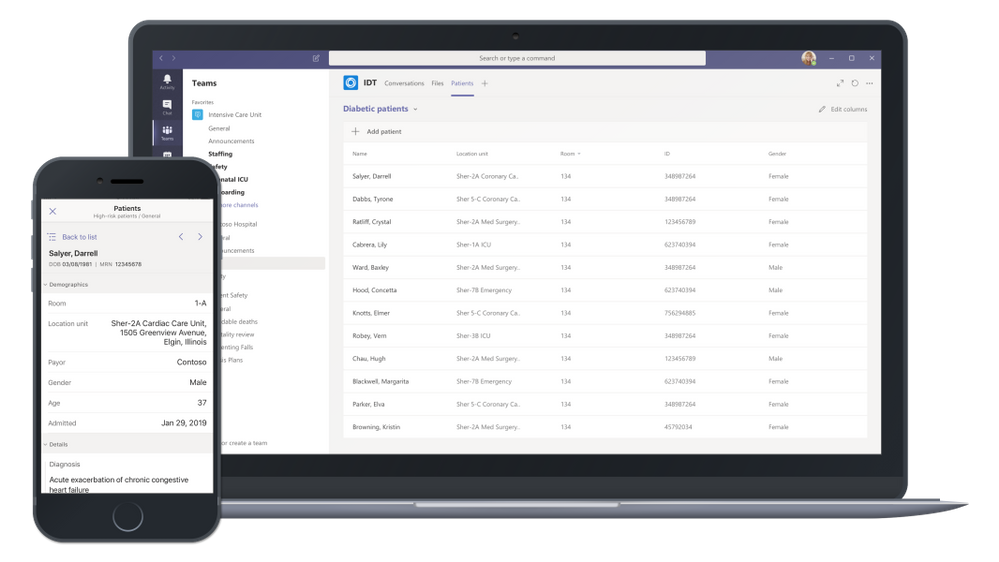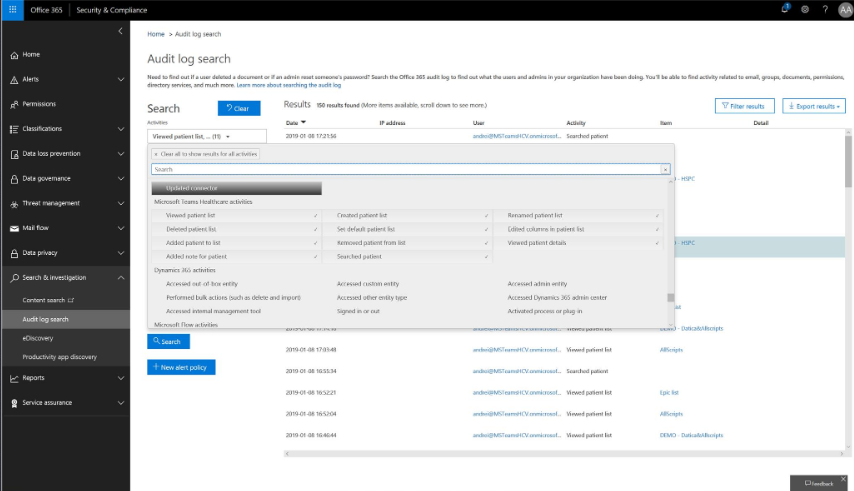Microsoft has designed Teams to empower healthcare professionals. Care coordination and collaboration are one of the key pillars of the investment that Microsoft is making in the healthcare space.
The solution gives healthcare teams a secure hub to coordinate and collaborate care for multiple patients. Teams provides integration with electronic health records (EHR) systems and enables care provides to communicate about patient care in real-time within Teams’ secure platform. Microsoft set out to address the following key challenges:
- Low efficiency in hand-offs and communication critical throughout the care continuum
- Siloed information that creates administrative burden in the healthcare system
- Growing dissatisfaction among clinicians with complex and fragmented collaboration tools
- Inefficient and in person care coordination that can burn too much clinical time and cost

The care coordination solution within Microsoft Teams involves a first party tab app that integrates with electronic health record (EHR) systems via a FHIR (Fast Healthcare Interoperability Resources) interface to bring valuable medical information from the systems of record into Microsoft Teams. This enables clinical workers to collaborate and communicate across the care continuum.
The care coordination solution can be enabled through partnerships with leading healthcare Independent Software Vendors (ISVs) that can connect the care coordination solution to your EHR systems and bridge the gap between existing health data standards like HL7v2 and FHIR.
As of February 2020 Microsoft Teams has partnered with the following healthcare partners to establish EHR integration:
- Datica (through their CMI offering)
- Infor Cloverleaf (through the Infor FHIR Bridge)
- Redox (through the R^FHIR server)
- Dapasoft (through Corolar on FHIR)
Let’s talk about the features of the care coordination solution
Today, the 1st party app (which sits in the general channel of a Team as a tab app) lets a care team – doctors, physician assistants, nurses, social workers, dietitians, case managers and more in a hospital unit or ward create lists to include patients that they want to monitor to coordinate care, take notes around their condition, fetch their latest medical data from the EHR and collaborate over them in the context of Teams and channels using the various features of Microsoft Teams such as channel mentions, at mentions, channel meetings, etc.
The app has an underlying service layer with an operational FHIR client interface that can query relevant patient medical information, connected to underlying EHR systems deployed within a provider organization. Listed below are some of its key features:
- Ability to fetch the latest patient data from the EHR systems
- Ability to create multiple patient lists within a single channel.
- Ability to view and sort information displayed about patients through configurable columns.
- Ability to auto-provision the application through a team template.
- Available on the Teams App for iOS and Android for mobile-first healthcare workers.
- Support for FHIR DSTU2 and STU3 versions via parsing of conformance statement.
Teams is designed with HIPAA and ePHI in mind
Microsoft Teams is Tier D compliant per the Office 365 compliance framework and boasts support for the HITRUST CSF and HIPAA BAA which allows a covered entity to sign a BAA (business associate agreement) per Microsoft Volume licensing and Online service Terms. Therefore Microsoft Teams can be used to store and share ePHI data.
As far as the care coordination solution goes, the data it pulls from EHR systems are not stored at rest. Also, there are 11 events for read actions performed by clinical users inside the Microsoft Teams care coordination solution that shows up in the Security and Compliance audit logs.

{{cta(‘3764ed83-ab3e-40cb-a644-a9f4e7fb320b’)}}
By: Ansuman Acharya, Microsoft











